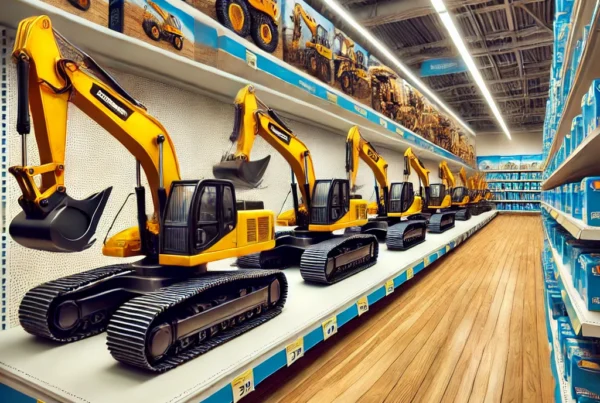Deciding whether to manage your dealer network directly or partner with regional distributors is vital for OEMs in the equipment industry. This post explores the pros and cons of each model, helping you choose the best approach for your organization’s growth and success in a diverse market landscape.
Should you as an OEM manage your dealer network directly, or partner with strong regional distributors?
The equipment industry is split between OEMs that sell direct to their large network of dealers and OEMs that set up large regional distributors to build their own local network of dealers. A lot of OEMs even have a mix of direct-to-dealer regions right alongside regional distributors. This makes it apparent that there is no one-size-fits-all correct answer, it depends on the OEM business and the market they are in. I’m going to go into the pros and cons of both models to help you decide how your OEM should roll out.
Direct to Dealer Model
This model is when the OEM sells directly to a network of dealers. Each dealer is signed and supported by the OEM. All transactions flow from the dealer right to OEM. All contact is from dealer right to OEM. This model is great because the OEM has full control over the choice of dealers, branding expectations can easily be communicated and supervised and there is more margin to go around.
The downsides are that there are so many transactions and personal contacts when supporting the dealer network directly. This means more staff, often enough to eat up the extra margin obtained by eliminating the middleman of the distributor. The OEM also has to do business with smaller entities in the form of small-market dealers that may lack credit and professionalism. Some of these smaller dealers will also be very far from the corporate mothership in distance, but also by time zones and local culture, making it very difficult to support all dealers at the highest level of customer service and messaging.
One of the surest ways to achieve success with the Direct to Dealer model is to have professional, empowered individuals in the Territory Manager position. They need to be able to take the corporate message and deliver it on the local level. They need to be able to gather information from their territory and advocate for their dealers with corporate. One word of caution is that going from the Direct to Dealer Model to the Distributor Model can be ugly. Even if it will result in better service and support, the dealer will see it as a personal slight that they go from being supported directly to being supported by a middleman.
Distributor Model
For this topic, “distributor” is referring to a business that purchases equipment from an OEM to resell to dealers that then sell to the end user. In a lot of cases the distributor will have one or more dealership locations of their own but also have a network of independent dealers that purchase from them. With the Distributor Model you do lose direct control of selecting your dealers, the margin is split with an additional party and your branding can become deluded with this extra layer between the OEM and the end user.
There are advantages that can more than make up for these pitfalls. You will have massively less transactions and personal contacts. Your staff needs in customer service and territory management will be halved. You will want higher caliber individuals though. In the distributor model you will be doing business with only larger, more stable businesses, likely with better credit. The biggest advantage is that these regional distributors can usually span the culture gap between corporate and local. They will be large enough to be the professional partner you want. They will be home-grown enough to understand their dealers’ needs and expectations.
For the Distributor Model to excel, you need to choose the right partners and you need to let them in a little closer than you would a regular dealer. You need to empower them to bring you feedback and you need to trust them to convey your corporate message how it needs to be conveyed locally.
Choosing what is right for you:
Apply the points above to choose for your organization. If your precise branding is important, closer control of the dealer model might make sense for you. If you have great access to top-notch, affordable customer service personnel, you might be setup well to support a network of dealers directly. If you lack the infrastructure to support a massive amount of transactions and credit applications, maybe distributors are the way to go. If your pitch and branding needs to be tweaked region by region, distributors can help you with that.
Both models can be successful. Connect Sales, Coaching and Consulting can help you choose, and can help you setup and excel with whatever way is right for you to grow.






